

Ones to Watch: Multiple organisms
Louise Davis reports on 10 pioneering companies that are driving the next wave of fungi-based food innovation – with consumer satisfaction guaranteed!
Aside from opportunities for amusing headlines, the fungi kingdom is also greatly delivering on the innovation front. Putting the enormous significance of fungi into context, British biologist, Merlin Sheldrake, begins his fascinating book Entangled Life by noting that, “Fungi are everywhere but they are easy to miss. They are inside you and around you. They sustain you and all that you depend on. As you read these words, fungi are changing the way that life happens, as they have done for more than a billion years.”
For our purposes, fungi are changing the way we approach food R&D. Emerging bioprocessing advances – centered around precision fermentation (and its ability to scale), strain engineering, and process automation, coupled with breakthroughs in nutrition and digestibility – are unlocking new applications for mycelium-based ingredients.
One key trend here is the evolution of mycoproteins from primarily being used as meat analogs to becoming problem-solving tools within a range of new areas. Companies are now exploring not only how mycoprotein can be used to replace meat, but also dairy, eggs, and seafood. Mycelium-based protein is also being introduced in various applications as a functional ingredient in its own right, to serve as an emulsifier, binder, or texture/flavor enhancer, for example.
The huge market potential is clear, both within the alternative proteins sector and in the conventional food market, where companies are always on the lookout for competitively priced, scalable new ingredients that enable firms to respond to consumer demand for nutritious, protein-packed foods. And the innovators featured in this article have spotted this potential from the get-go. As Paulo Ibri at Typcal says of his Neutra Pro product, “We see it as an ingredient platform and not just a protein”.
Where the (mycelium) magic happens
Ibri and his team are based in Brazil, but fungi-based innovation is happening all over the world. The cross-section of pioneers in this article alone spans Shanghai, multiple countries in Europe, and the USA. And what these experts are working on is equally as diverse as their geographic locations. Here, we’re showcasing companies developing end products such as mycelium jerky, as well as those offering fermentation technology that will allow others to successfully scale, and yet others researching how AI can assist in process optimization.
Although their focus areas vary, what our experts have in common is a shared belief in fungi as a force for good to help answer the question of how best to feed a growing population sustainably. Daniel MacGowan-von Holstein, CEO of Kynda, neatly summarizes this viewpoint by saying, “What makes mycelium truly stand out – compared to both traditional proteins such as meat, and alternatives such as plant- or insect-based sources – is its unmatched efficiency and adaptability. It grows incredibly fast using minimal land, water, and energy. Fermented in bioreactors using food-industry by-products, it’s ideal for decentralized, local production – a real breakthrough for global food resilience.”

Brazilian Culture
Paulo Ibri (CEO) and Eduardo Sydney (CTO) founded Typcal with the aim of being the first company in Latin America to develop mycelium fermentation with a circular process. “Mycelium protein is the most viable alternative not only for population growth, but also for people’s health,” Ibri states. “It is an extremely nutritious protein that, as well as containing all essential amino acids, is a source of fiber. In addition, it is much more sustainable. In our case, we use industrial waste as a source of nutrients for the mycelium. Because production is indoors, carried out in reactors, it is possible to produce much more protein per square meter than any other alternative on the market.”

It’s also possible to produce mycelium protein very quickly. “Our fermentation takes only 24 hours, making it one of the fastest – if not the fastest – in the world,” Ibri suggests. This is a finely tuned (and indeed patented) method that has taken several years. “We have developed the best fermentation conditions in our equipment, as well as the best combination of nutrients for the mycelium to grow faster and speed up our process,” Ibri adds. “Also, it is based on the circular economy, which is a crucial point in terms of reducing CO2 emissions and water footprint. The speed and scale of our technology aim to make Neutra Pro increasingly accessible, potentially benefiting thousands of people as well as the environment.”
Protein platform
Typcal’s Neutra Pro ingredient nicely exemplifies the growing trend for mycelium-based proteins to move beyond usage in meat analogs and be used as emulsifiers, binders, texture enhancers, and flavor enhancers in other types of product. Indeed, Ibri says he has regarded Neutra Pro as an “ingredient platform” from the start. “Neutra Pro is not just a protein. At the outset, we have focused on developing new ingredients, in addition to fresh biomass (used in plant-based products) to meet the health and sustainability needs of other industries. I believe that mycelium has potential for several ingredients but also as a source of fiber, which is nutritious for the digestive system and can have an even more positive impact on the consumer.”
This forward-focused approach is integral to Typcal’s business model. “As a food biotech, we understand that we must work on ingredients now that will only be consumed in two or three years,” he comments. “That is why we invest heavily in R&D, and I do not believe that this investment will decrease any time soon, as we always want to innovate.”
Our fermentation takes only 24 hours, making it one of the fastest in the world
And that considered approach is serving him well. Typcal has recently announced a R$5 million (US$880,000) investment in a new factory in Curitiba, Brazil, which Ibri says is, “a crucial step toward starting the commercialization of our mycelium protein and bringing innovation to the food industry”, as he predicts a turnover of R$5 million (US$880,000) – neatly matching that investment – in the first year.
He’s also setting his sights further afield. “By the end of 2025, we will be expanding into Europe, to be closer to our local partners and to bring our ingredients to as many industries as possible,” Ibri confirms.
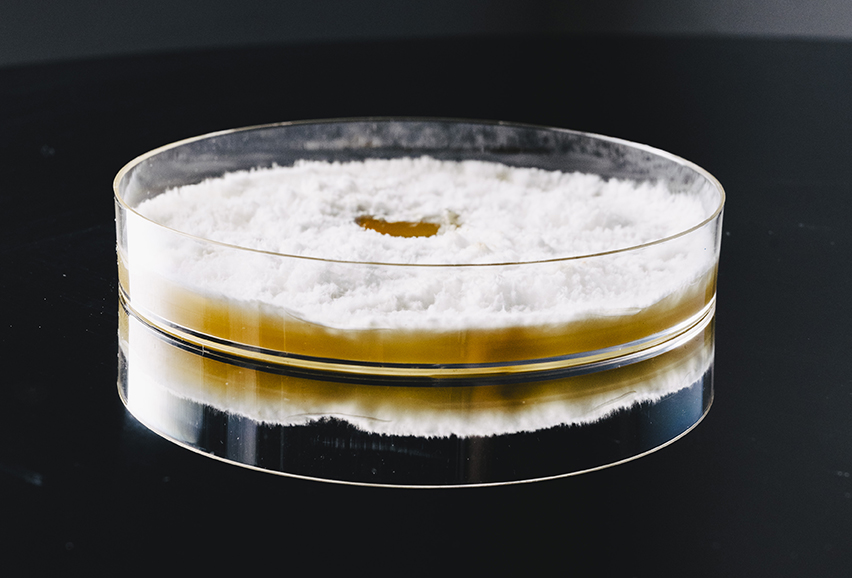
Kynda Good
German biotech company, Kynda, uses proprietary technology to turn agricultural by-products into mycoprotein for the food and pet-food industry. To do so, it harnesses the power of mycelium, which CEO Daniel MacGowan-von Holstein praises for its efficiency and adaptability. “In just 24-48 hours, our process yields a mycoprotein rich in fiber and protein, outperforming traditional methods,” he says.
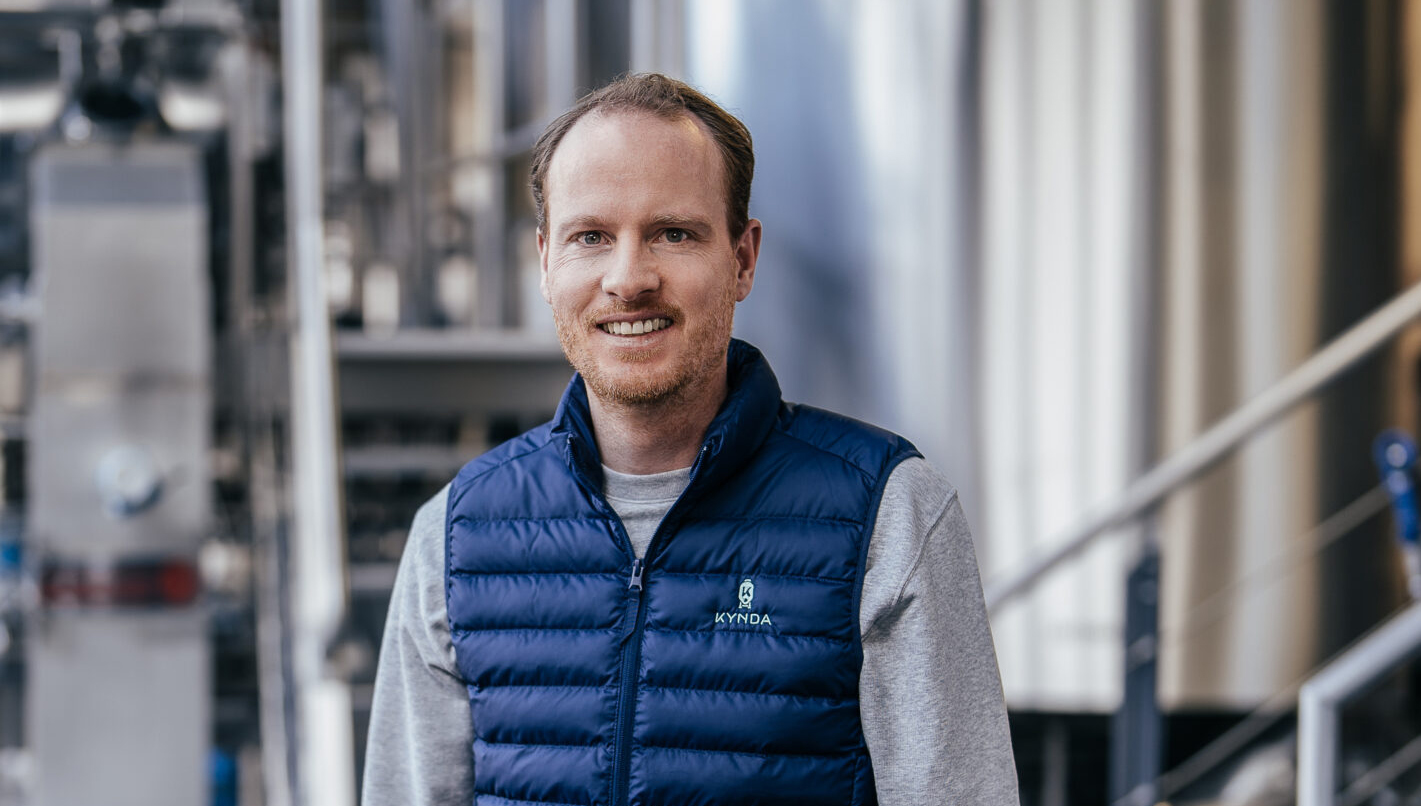
“Mycelium is rich in complete protein, fiber, all nine essential amino acids, beta-glucans, and prebiotics,” details MacGowan-von Holstein. “It’s low in saturated fat, cholesterol-free, and naturally umami-tasting, which means it needs little processing or flavoring to become delicious.” And, he cites several advantages of mycelium compared with other alternative proteins. “Mycelium’s benefits include: no monocrops, irrigation, or long supply chains (as we see in plant proteins); no regulatory or consumer hurdles (as we see with insect proteins); and unlike cell-cultivated meat, it’s already scalable and cost-effective.”
MacGowan-von Holstein says that, culinarily speaking, mycelium protein’s naturally meat-like texture also gives chefs and product developers a blank canvas. “It’s not just a substitute: it’s a new category of clean, whole-food protein. It’s scalable, nutritious, planet-friendly – and it’s ready now.”
Kynda has taken a different commercial approach to many players involved in mycelium production, as MacGowan-von Holstein explains. “We don’t produce the final mycelium-based product ourselves. Instead, we supply the enabling fermentation technology to our partners – typically companies with food-industry by-products they’re looking to valorize, or CPG brands seeking supply chain independence and a cost-effective, great-tasting protein ingredient.
“Our technology is designed to be installed directly on our partners’ existing factory floors. That means they can start producing mycelium with much lower capital investment, and with significantly lower operational costs. By localizing production, we also reduce the carbon footprint associated with transportation. In short, we help others unlock the potential of mycelium within their own infrastructure – making it scalable, efficient, and sustainable from day one.”
Fermenting ideas
Discussing the reasoning behind this business model, MacGowan-von Holstein says, “We chose to develop our own fermentation technology because off-the-shelf systems simply aren’t optimized for mycelium fermentation – particularly not for the kind of efficiency, simplicity, and scalability we’re aiming for. Our approach combines proprietary technology with a aunique bioprocess, designed specifically to make biomass fermentation accessible and cost-effective for a wide range of partners.”
He says that a key feature is Kynda’s proprietary inoculation system and the supply of ready-to-use starter cultures, which eliminates the need for any fermentation expertise on the customer’s side and considerably reduces complexity and cost, both in set-up and operation. “The result is a process that’s extremely user-friendly and low-maintenance, ideal for food producers and CPG companies that want to start producing mycelium directly onsite,” he notes.
Mycelium is not just a substitute: it’s a new category of clean, whole-food protein
The process is also a great example of how alternative proteins can contribute to the circular economy. “One of the most exciting aspects is that our technology is designed to upcycle food-industry by-products – of which there’s an almost endless supply globally,” MacGowan-von Holstein highlights. “As more companies seek to use these by-products sustainably and efficiently, our solution enables them to turn side streams into high-quality, nutritious mycelium. That’s a huge untapped opportunity across multiple sectors.”
Ultimately, says MacGowan-von Holstein, Kynda’s goal is to make mycelium production “simple, affordable, and globally deployable – not dependent on highly specialized infrastructure or expertise”. He predicts that is what will “enable rapid adoption and unlock the full potential of this protein source worldwide”.
%20copy.jpg)
From farm to fork
“What excites me about mycelium is that it gives us a way to grow food that works with nature instead of against it,” enthuses Maia Farms CEO, Gavin Schneider. “Mushroom mycelium grows quickly, requires very little land or water, and can thrive on upcycled agricultural by-products. It’s efficient, low-impact, and adaptable. In other words, it offers us a path to scale nutrition without scaling destruction.”

Schneider grew up on a farm and says his upbringing shaped the way he looks at sustainability. “For me, mycelium represents the best of both worlds: the humility of the farm and the intelligence of nature. It’s not just a protein alternative: it’s a systems solution that can help nourish both people and the planet,” he emphasizes.
The evidence of this considered approach can be found in Maia Farms’ mycelium ingredients product portfolio. “We regard mycelium as a platform ingredient. Yes, it can complement meat in traditional formats, but the real power is in its functional versatility. We’re developing products that act as natural binders, thickeners, and emulsifiers, all while adding clean-label protein and fiber,” details Schneider. Expanding on that last point, he says that mycelium-based ingredients offer a clean, nutrient-rich alternative to the long, synthetic-sounding ingredient lists the food industry is trying to move away from. “They can replace gums, stabilizers – even eggs in some cases – all while enhancing mouthfeel and boosting nutritional content. The applications extend far beyond meat: bakery, dairy alternatives, snacks, sauces, even beverages. This is a toolkit for rethinking food formulation from the ground up.”
Trust the process
Maia Farms is headquartered in Canada, and it is far from the only company doing cool things with mushroom mycelium in North America. So, what’s different about this firm? “Our process is grounded in liquid-state fermentation, but what makes it truly unique is how we’ve optimized it for real-world scalability and integration into food systems,” Schneider answers. “We don’t rely on Fusarium, like many others. Instead, we use oyster mushroom mycelium, which brings its own advantages in terms of fiber structure, digestibility, and flavor neutrality.”
Schneider reveals that the company has built proprietary lab-scale bioreactors and monitoring systems that allow it to precisely control every input. On this, he notes, “All our data feeds into the Fungal Intelligence Database, a system we’ve built to analyze and improve yield and nutrient profiles in real-time. The result is a modular, scalable process that minimizes waste and maximizes adaptability across product categories.”
In terms of how he approaches ingredient optimization, Schneider describes this as a constant feedback loop. “We start with strain selection, understanding genotype and phenotype relationships through high-throughput screening. Then we design custom media compositions using agricultural sidestreams, which not only drives circularity but allows us to finetune nutrient uptake and biomass conversion.
Mycelium is not just a protein alternative: it’s a systems solution that can help nourish people and the planet
“Texture and protein yield are functions of both biology and process engineering,“ he adds. “That’s where our internal lab infrastructure and AI-powered analytics come in. We monitor fermentation kinetics and adjust conditions dynamically to maximize output.”
Schneider also points out that, among all of this high-tech, AI-powered work, the human element remains a critical factor for success. “Our team’s cross-functional knowledge in microbiology, food science, and process design lets us iterate quickly and apply insights across our product lines,” he observes.
Schneider’s thoughtful ethos is paying dividends on the commercial side. In 2024, Maia Farms raised CA$2.3 million (US$1.7 million) in pre-seed financing, and the CEO says that 2025 is shaping up to be a “landmark” year. “We’ve laid the foundation with our science and partnerships – now we’re stepping into the spotlight. We’re launching a new e-commerce website and we’re continuing to scale our operations, expand internationally, and build out a deeper portfolio of functional mushroom mycelium-based ingredients.”

Biomass production
Discussing the motivation behind his work, Tim Fronzek, Co-Founder & CEO at Nosh.bio, says, “Biomass fermentation leverages centuries-old technology such as traditional fermentation, and adapts it for mass-producing mycelium – our main ingredient. Compared with other processes such as precision fermentation or cultivated cells, the process design and operational complexity are much simpler, resulting in a more cost-efficient technology
when it comes to scaling.”

Nosh.bio is not alone in deploying biomass fermentation to produce fungi-based proteins, but Fronzek claims that his approach stands out among the competition in two key areas: strain selection and downstream processing.
“We’ve selected a strain with a strong track record of safety and a long history in food production,” he says. “Our strain is also highly robust and fast-growing, which enables efficient biomass yields. Its versatility allows us to use low-cost feedstocks – such as starches and complex nitrogen sources – helping to significantly lower production costs while maintaining high ingredient quality.
“On the processing side, we’ve developed a proprietary, minimal downstream method that transforms the biomass into muscle-like structure. Unlike other approaches that rely on intensive mechanical or chemical treatments to mimic meat textures, our process retains the fiber structure, allowing us to deliver satisfying, meat-like textures more simply, quickly, and affordably.”
The results of this work can be found in the company’s koji fungi-based ingredient. Describing this product, Fronzek says, “Our process starts in our labs, where we keep pure stocks of our selected strain. We use this pure stock to inoculate fresh culture medium in a flask under sterile conditions. After a couple of days of cultivation, this flask is used to inoculate production-scale fermenters. Our fermentation process is very similar to beer brewing, the main differences being that our fungi needs air to grow, and that the process is much quicker. When the fungi depletes all the nutrients in the broth, it stops growing, and we begin harvesting the biomass. During our minimal downstream process, we separate the biomass from the broth – at which point a meat-like structure naturally forms from the densely packed mycelia.”
He says that the end result is a wet-format ingredient with a muscle-like fiber structure and excellent water-holding capacity, which helps deliver the juiciness and succulence expected in meat and seafood products. “This natural structure allows the ingredient to be shaped into meat analogs without the need for added binders or texturizers, thereby unlocking clean-label formulations. Our ingredient’s versatility makes it ideal for a range of meat alternative applications.
Our process is designed to maximize biomass yield and productivity by leveraging a strain that naturally accumulates high levels of protein
“Our ingredient can take a range of formats aside from wet: we can dry and grind into a powder that can then enhance product functionality in applications across all verticals in the food industry – from vegan mayonnaise, ice cream, chocolate, cheese, yogurt, and pancakes to protein drinks, bars, and supplements. In a nutshell: at Nosh, we leverage non-GMO koji fungi to create affordable, nutritious and tasty solutions with functional properties.”
Refined taste
The koji-based ingredient certainly sounds great, but how does it taste? “It has a nice, natural umami flavor when harvested, which is perfectly suited to the development of meat analogs. This is reflected in our clean-label, one-ingredient, Koji Chunks product,” reports Fronzek. “Marinades can be used to present the Koji Chunks in a variety of flavors (if this is the aim), but the meaty taste is present from the start – and it can easily be washed away when catering to other verticals than food.
“Unlike other mycelium-based ingredients on the market, which typically start developing an off taste above a certain inclusion rate, this is not the case for us,“ Fronzek notes. “This differentiator provides us with huge flexibility when supporting our partners in developing end products using our ingredient.”

High steaks player
Pierre Dupuis is betting on the scalability of fungal protein production. “We believe it can scale like brewing – and some companies, such as Quorn, have already proven this. However, depending on the fermentation technology, fungal protein production can be more complex and CaPEx-intensive than brewing (e.g. more strict sterility requirements). This can be solved through industrial production partnerships, and there is immense potential for mycelium companies to scale to very large volumes and disrupt the food and textile industries. This is what we’re doing at Adamo Foods.”

Adamo’s Founder & CEO is already seeing the fruits of his disruptive labors. The company’s mycelium steak has recently been proven to have a higher protein quality than beef, with matching iron and B12 content. On this, Dupuis comments, “We’re extremely pleased with these results, which demonstrate that our product can indeed beat meat, even from a nutritional perspective. In collaboration with a leading UK university, we conducted a full DIAAS (amino acid score) assessment of our product, which includes the content and bioavailability (digestibility) of proteins. This DIAAS assessment is the first-of-a-kind for mycoprotein, giving us cutting-edge data for the most accurate and realistic picture.”
Variable frequency drive
Dupuis attributes many of his successes thus far to his proprietary fermentation platform. “It allows us to play around with a huge amount of fermentation variables (temperature, agitation, etc), which all have a massive impact on texture,” he explains. “We can therefore re-create very tender cuts, or some more chewy/flaky pieces, depending on the type of whole cut we’re trying to mimic.”
There is immense potential for mycelium companies to scale to very large volumes and disrupt the food and textile industries
Harnessing the power of mycelium also enables Adamo to produce healthier versions of traditional meat products. It deploys plant-based fats to replicate the juicy mouthfeel of a traditional steak. But, Dupuis says, “Thanks to our mycelium’s inherent structure and water-holding matrix, we don’t actually need to add a lot of external fat. Our product contains only around 5% fat, which also contributes to making it healthier than a beef steak.”
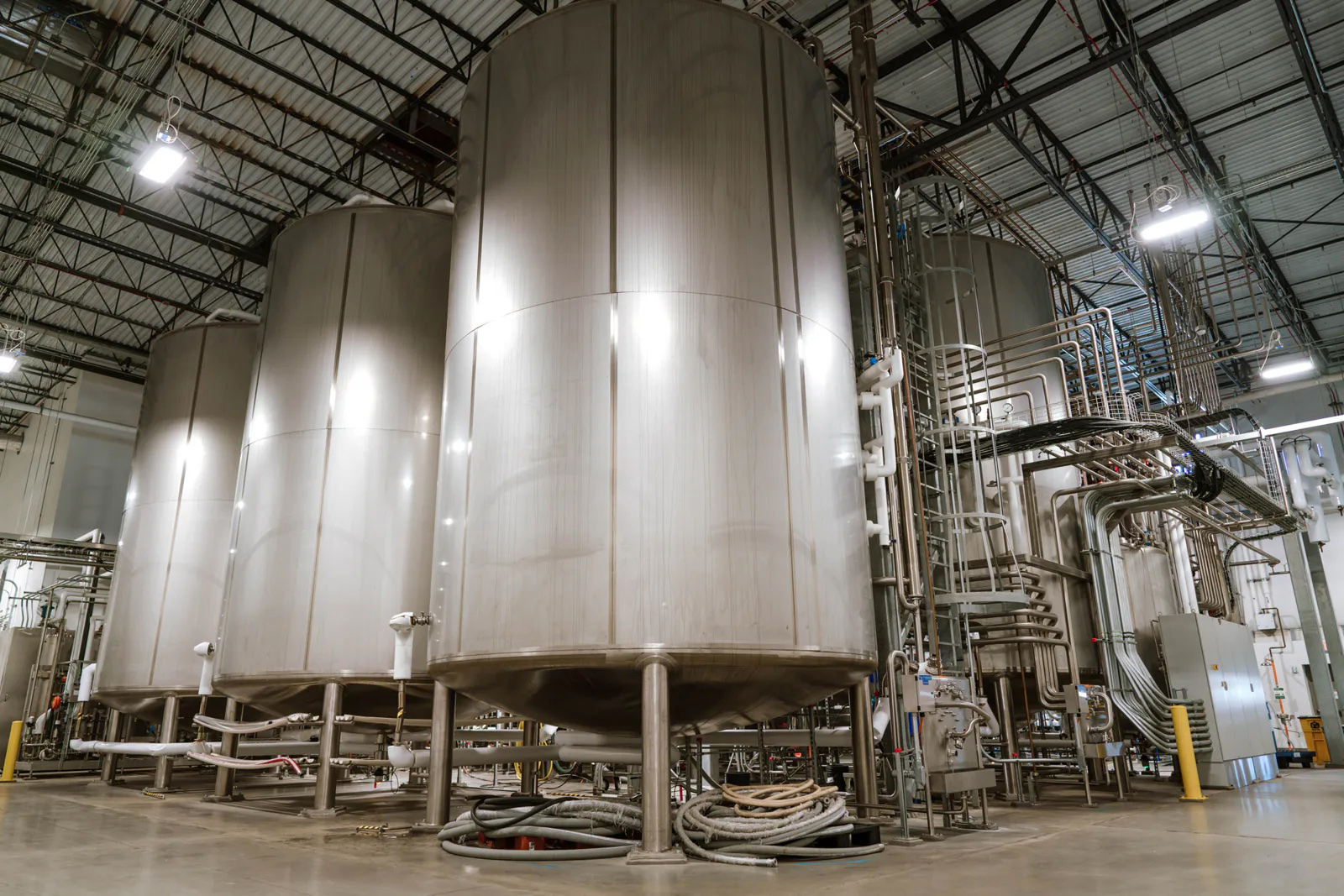
Ingredients for success
Flavor modulation and sweetening are two of the applications fungi is being deployed for at US company MycoTechnology. Its ClearIQ flavor clarifier is created using mushroom mycelial fermentation, a type of submerged fermentation. “In contrast to solid-state fermentation – where mycelia are grown on a substrate such as grains or oats – our mycelia are grown in a liquid medium that is continuously optimized to achieve the final product quickly and efficiently,” explains Ranjan Patnaik, CTO.

The ClearIQ product exemplifies the trend for fungi-based ingredients to be used as flavors/ingredients in their own right, within a broad range of new applications. On this, Patnaik comments, “The fungi kingdom is vast and diverse, with many unique capabilities. As awareness grows, we’ve started to uncover many ways that fungi can add value to our food systems, and there is still much more to discover. ClearIQ has broad-spectrum flavor modulation capabilities. It can harmonize flavor profiles, enhance a wide range of flavors including fruity and indulgent flavors, and mitigate several common off notes.”
Sweet dreams
The MycoTechnology team has also discovered a new sweet protein from the honey truffle, which is a uniquely sweet species of truffle that has been consumed for thousands of years. “Our advanced fermentation technologies have allowed us to efficiently produce this protein with a clean sweetness profile, proven safety and digestibility performance, and low cost-in-use. Although we are still evaluating performance across food, beverage and personal care applications, Honey Truffle Sweet Protein could have a total potential market size of over US$1 billion,” Patnaik says proudly.
We’ve started to uncover many ways that fungi can add value to our food systems, and there is still much more to discover
Discussing the technology used to create these new ingredients, Patnaik says, “We use lab-scale fermentations to optimize the growth and production medium, fermentation parameters, and downstream processing parameters. This allows us to control the physiology of the mycelium culture that results in the desired balance between factors such as yield, texture, and protein content.”
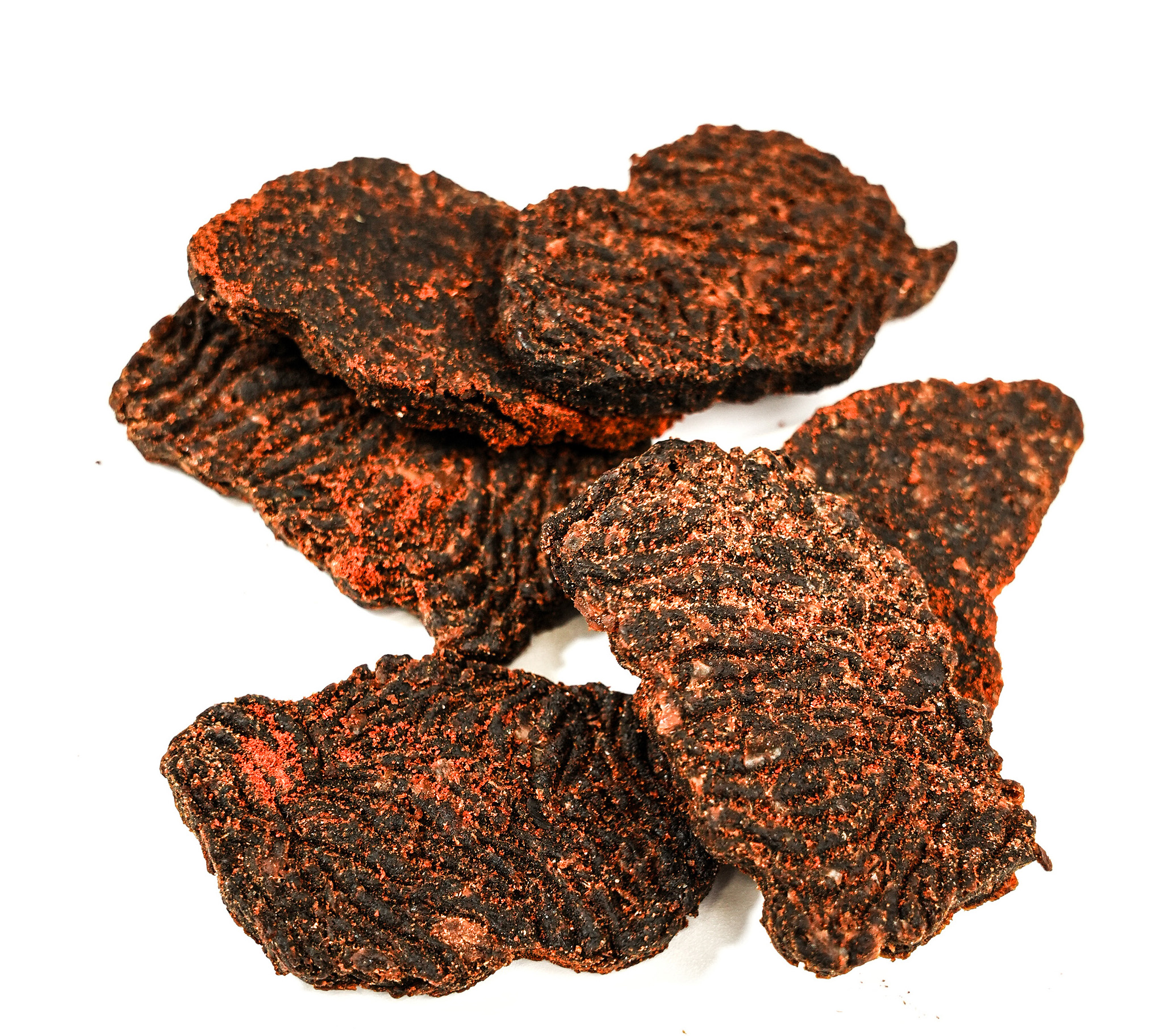
Magic morels
“Our approach is quite different from most mycelium companies,” begins Ziliang Yang, Founder & CEO of CellX. “We use mushroom mycelium – more specifically, we use morel mushroom mycelium, while many other companies use filamentous fungi such as Fusarium,” he explains.

When asked why he opted to focus on morel mushrooms, Yang says that he wanted to start with something that consumers are familiar with and that adds premium value. “Often hailed as the ‘King of mushrooms’, morel mushrooms have long been treasured by food enthusiasts, foragers, and chefs for their distinct umami, earthy, and nutty flavor, as well as their satisfyingly meaty texture.” Importantly, he adds, “this morel mushroom mycelium strain also grows rapidly – it’s on par with the growth rate of filamentous fungi such as Fusarium”.
Putting the morels to work via “a combination of media and bioprocess designed to achieve the optimal yield, texture, and protein content”, CellX has recently developed a mushroom jerky under the brand name ‘Mourish’. It’s a clean-label product, and it recently achieved self-affirmed GRAS status. “This means we are able to sell in the USA, and we have subsequently just launched Mourish in this market.”
Cultivating expertise
Given that CellX’s primary business is in cultivated meat, why is Yang now turning toward mycelium? “Mushrooms are a superfood, offering incredible benefits. But traditionally, mushroom fruiting body is not a great source of protein: by harnessing mycelium fermentation, we significantly increased its protein content, making it an ideal protein alternative.”
By harnessing mycelium fermentation, we significantly increased its protein content, making it an ideal protein alternative
He also highlights that morel mushroom mycelium, produced through biomass fermentation, offers a unique blend of nutrients. “Packed with approximately 50% protein, 25% fiber, and enriched with essential vitamins and vital minerals, morel mushroom mycelium is an exceptional protein alternative.” And, he notes presciently, “Compared to cultivated meat, it’s significantly easier to scale up and much cheaper to grow.”

Ingredient innovation
According to Lowie Vanholme, Commercial Director of Belgian brand Promyc, fungi-based proteins (such as Promyc mycoproteins) are gaining recognition not only for their role in meat alternatives but also for their functional properties in food formulation. “Their natural ability to bind, emulsify, and enhance texture makes them a valuable ingredient beyond traditional meat analogs,” Vanholme says. “We see potential applications in dairy alternatives, where they contribute to texture and stability without relying on synthetic stabilizers. They can be used in protein-rich snacks, sports nutrition, and even in ice cream, where they improve mouthfeel without affecting taste.”
Vanholme says that compared with conventional ingredients, fungi-based proteins offer a “clean-label alternative with good nutritional properties, high digestibility, and
a lower environmental impact”.
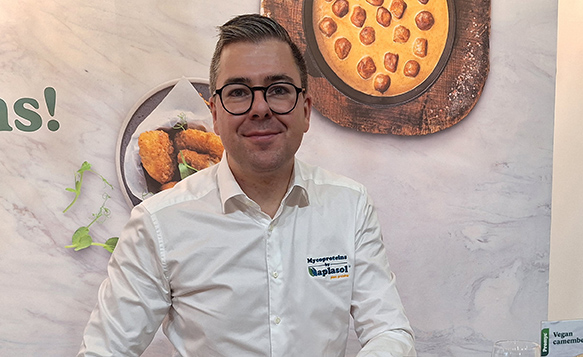
Putting this into context, Vanholme explains, “One of the biggest gaps in the alternative protein space is taste and texture – and that’s exactly where Promyc stands out. Most of our customers come to us because they’re looking for ingredients/proteins that can make their end products taste better – whether it’s meatier, juicier, or simply more enjoyable to eat.”
Hybrid vehicles
When prompted for examples, Vanholme says that meat processors are using Promyc S110 in hybrid meat solutions. “Their goal is to reduce meat content without losing the familiar bite and succulence. We are currently working with European leading brands to create a product that tastes just as good, if not better than meat – and has a notably lower environmental footprint. Promyc helps cut emissions and land use significantly, making these hybrid meats a more sustainable choice without asking consumers to compromise.”
In another application, some European plant-based brands are launching crispy vegan nuggets and schnitzels made with these mycoproteins. “Compared with the traditional soy or wheat versions, they tell us Promyc delivers a more fibrous, meat-like bite – and it doesn’t carry off-notes, making it easier to season and flavor,” states Vanholme.
One of the biggest gaps in the alternative protein space is taste and texture – and that’s exactly where Promyc stands out
Vanholme is also observing new developments in cheese alternatives. “Thanks to Promyc’s neutral base, developers can create clean-label, better-tasting dairy-free options that don’t rely on starches or oils alone and are richer in protein and fiber than many current products.”
.jpg)
The modern mycoproteins
Schouten Europe has decades of experience in developing plant-based meat alternatives, so a move into mycoprotein-based products was a logical next step. “Our experience with ingredient functionality, flavor development, and process optimization allowed us to quickly adapt and fine-tune the unique properties of mycoprotein, ensuring a high-quality, scalable product offering from the start,” explains Mark van Noorloos, Marketing Manager.
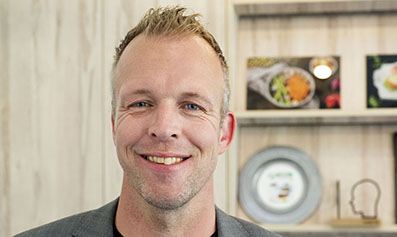
But Van Noorloos also credits the company’s ability to source best-in-class expertise from outside its own realm. “We work closely with partners that specialize in fermentation technologies to integrate the latest innovations into our production process,” he says. This is particularly relevant for such a rapidly evolving sector. “Advancements in gas exchange and oxygenation technologies are significantly improving fermentation efficiency,” Van Noorloos reports. “Controlled oxygen levels and optimized microbial interaction during the fermentation process enable higher biomass yields, faster growth rates, and a more consistent product quality.”
Optimal solutions
When asked how Schouten optimizes the yield, texture, and protein content in its mycoprotein, Van Noorloos says that this begins with selecting the right fungal strains and refining fermentation conditions such as pH, temperature, and nutrient feed. Again, he cites the value of collaboration. “We collaborate with a partner that has extensive experience in fermenting high-quality protein sources. Thanks to this partnership, we can rely on a consistent supply and stable quality of mycoprotein. After fermentation, we apply gentle processing techniques that preserve the natural fiber structure of the mycoprotein, ensuring a meat-like texture while maintaining high protein content.”
Advancements in gas exchange and oxygenation technologies are significantly improving fermentation efficiency
Van Noorloos predicts that mycoprotein products will play an increasingly important role in Schouten’s portfolio. “Compared to many products based on texturized vegetable protein (TVP), mycoprotein offers improved digestibility. It provides a more comfortable eating experience and better nutrient absorption,” he explains.
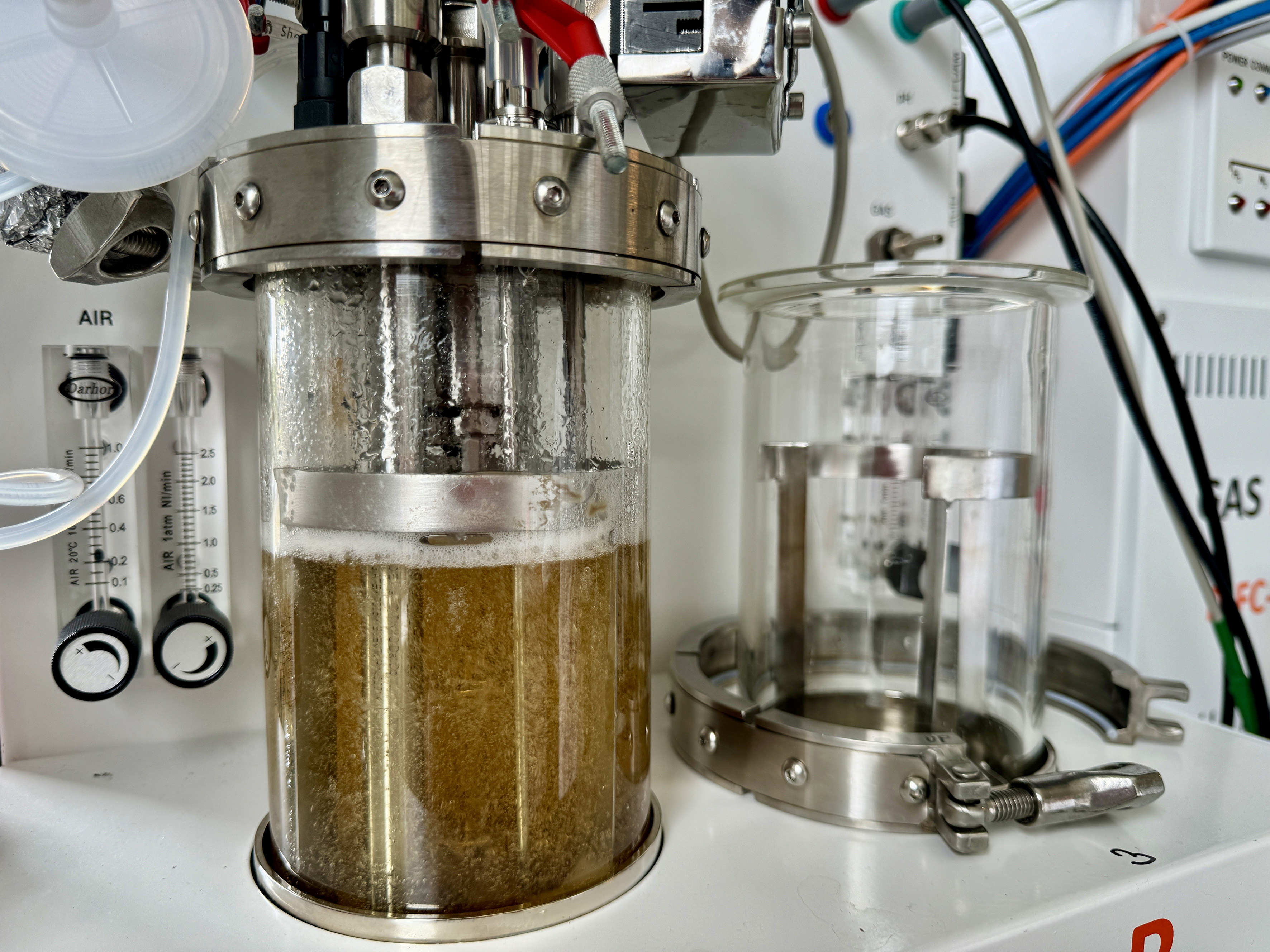
Zest for life
‘Fungi fermentation supported by digital modeling’ is the tagline for an interesting (and current) EU project called ZEST. “The project was initiated in response to the growing need for sustainable food production systems addressing the global protein demand while reducing environmental impact,” explains Anne Christine Steenkjær Hastrup, Director of the Center of Bioresources & Biosolutions Technology Center Pilot facility at the Danish Technological Institute, which serves as the project coordinator.
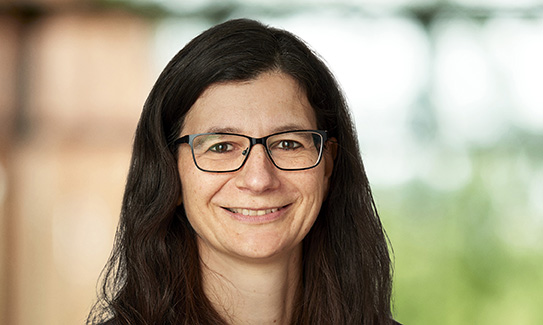
“The inspiration for ZEST came from the rapid advancement and proven feasibility of decentralized large-scale fermentation technology, as well as the potential of fungi as a natural, efficient, and versatile platform for producing high-quality proteins,” explains Steenkjær Hastrup. “Fungi can directly upcycle agricultural waste streams into valuable products due to their inherent enzymes, promoting a circular bioeconomy. The project also leverages advancements in biotechnology, biomanufacturing and AI to optimize fermentation processes and create scalable and sustainable solutions for alternative protein production.”
Because ZEST bridges AI, biotechnology, future food and sustainability, Steenkjær Hastrup describes it as a pathfinder in the alternative protein landscape. “The project combines green extraction methods, such as ultrasonication and enzymatic hydrolysis, to optimize the recovery of valuable components such as mycoproteins, chitins, and mannans,” she explains. “The incorporation of AI for real-time monitoring, control, and optimization of fermentation processes is also pioneering in the field of alternative protein production.”
Access all areas
Steenkjær Hastrup reveals that the project is developing an open-access database and machine learning-based tool for selecting optimal fungi-feedstock combinations, which she says “provides a valuable resource for the broader bioeconomy sector”. And, in terms of eventual commercial application of this technology, Steenkjær Hastrup reports, “ZEST aims to develop scalable and modular fermentation technologies, which can be licensed to biorefineries, food manufacturers, and other stakeholders. Some consortium partners may also establish spin-off companies to commercialize key innovations.”
Fungi can directly upcycle agricultural waste streams into valuable products due to their inherent enzymes, promoting a circular bioeconomy.
Ultimately, Steenkjær Hastrup notes, “ZEST aims to enhance the productivity, resource efficiency, and scalability of fungal fermentation systems.”
If you have any questions or would like to get in touch with us, please email info@futureofproteinproduction.com







